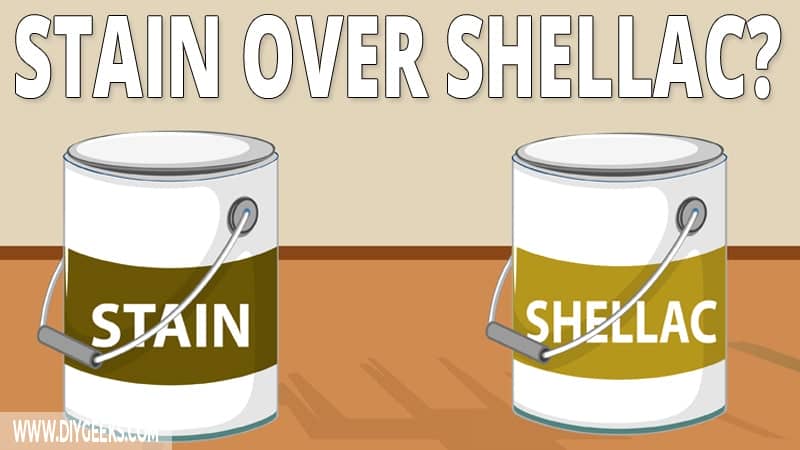You can stain over shellac, but you must sand it to create tiny ridges that the wood stain can soak into. If you don’t sand, the shellac coating will prevent the wood stain from adhering or penetrating its coating.
To stain over shellac, clean and degrease the finish, sand the finish, apply the wood stain, and seal the new finish.
Wait around 4-8 hours for shellac to dry before applying wood stain over it. If you apply it too soon, the stain won’t stick and will peel off.
Does Wood Stain Adhere to Shellac?
Regular wood stain doesn’t adhere to shellac directly. Shellac has a moisture-resistant finish that repels moisture (or liquids) and prevents wood stains from penetrating its surface.
You must sand (or remove) the shellac finish with fine-grit sandpaper (220-grit) or medium-grit sandpaper (100-grit) before applying wood stain. Sanding creates tiny pores (holes) on the existing finish that the wood stain can penetrate and adhere to.
It’s recommended to apply thinned shellac on wood types (non-porous) that don’t accept wood stains well. Thinned shellac will penetrate the wood pores but won’t clog them, this allows wood stain to penetrate the pores and stick over the shellac coating. You must lightly sand before applying the stain.
Water-based wood stain sticks better to shellac than oil-based wood stain. That’s because water-based wood stain doesn’t need to penetrate a surface deeply to adhere. On the other hand, oil-based stains won’t adhere well to shellac (which is also oil-based).
Gel stain is the best stain type to use over shellac as it’s a topical finish that doesn’t need to penetrate a surface to adhere over it.
How Long Must Shellac Dry Time Before Wood Stain?
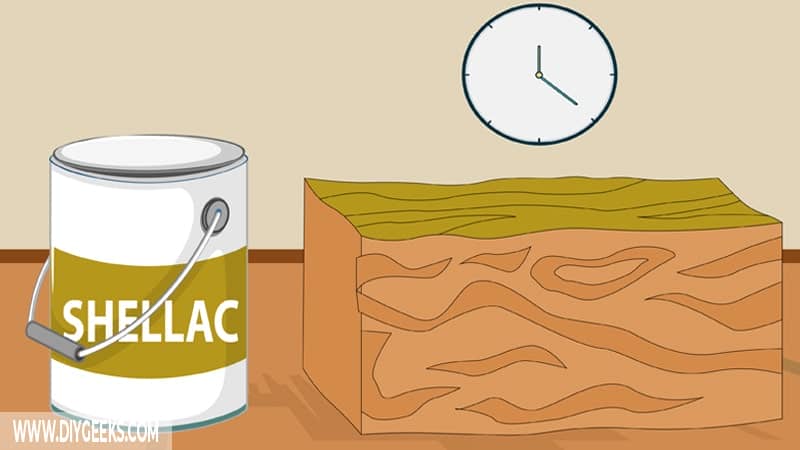
Shellac must dry for around 4-8 hours before applying wood stain over it. This gives the coating enough time to dry and harden to become strong enough to withstand sanding and support a new finish.
On average, you can re-coat water-based shellac within 4 hours and oil-based shellac within 8 hours. The exact dry time depends on the thickness of the coat, room temperature, and humidity levels.
The finish will turn sticky, tacky, or might peel off if you apply stain too soon (before shellac dries). That’s because wood stains can’t penetrate wet surfaces so they will peel off.
Note: It’s recommended to lightly sand the shellac before applying wood stain.
How To Apply Wood Stain Over Shellac?
To apply wood stain over shellac, do the following things.
- Clean and Degrease the Finish.
- Sand the Shellac Finish.
- Apply the Wood Stain.
- Seal the New Finish.
The tools you need for this project are listed below.
- Fine-grit sandpaper (320-grit)
- A can of stain
- Paintbrush
- Degreaser
- Paint thinner (or denatured alcohol)
- Clean cloth
1. Clean the Finish
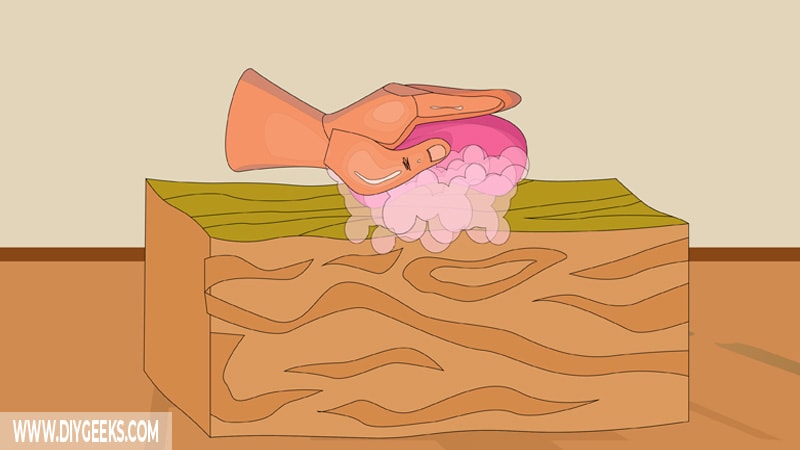
Clean the shellac finish with warm soapy water to remove dust, dirt, and debris that can prevent the wood sain from adhering.
2. Sand the Finish
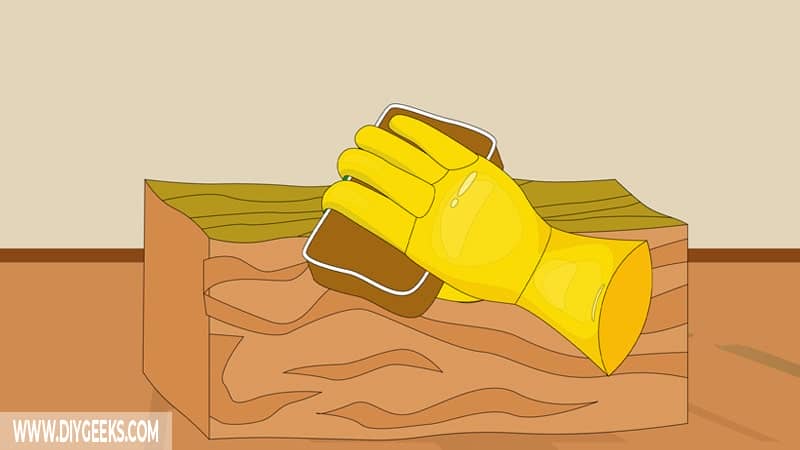
Sand the shellac finish with fine-grit sandpaper (220-grit) to remove surface imperfections and bumps, and create tiny pores (holes) on the finish that the wood stain can penetrate and adhere to.
Use coarse-grit sandpaper (40-grit) or paint-stripping paste to remove the shellac finish before applying wood stain.
3. Apply the Wood Stain
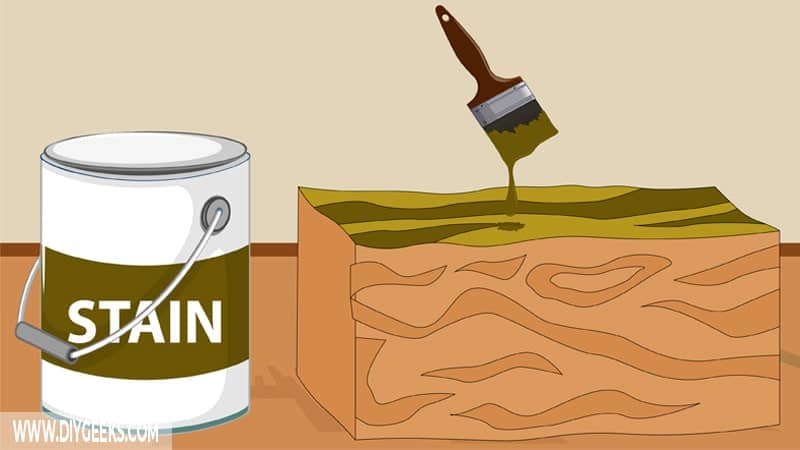
Apply three (3) wood stain coats over the shellac finish using a paintbrush or sprayer. Wait until one coat dries, remove the excess, and apply the next coat.
4. Seal the Finish
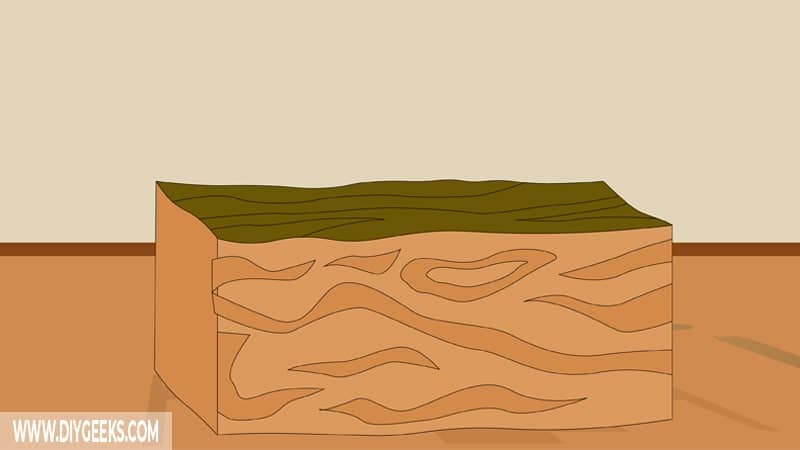
Seal the stained wood finish with a moisture-resistant sealer to increase its durability and protect it from water, moisture, scratches, and weather elements. The sealer produces a moisture-resistant layer (barrier) over the surface.
Can You Mix Shellac and Wood Stain?
You can mix shellac and wood stain if both finishes have the same solvent (or base). So, you can mix the water-based types together and the oil-based types together.
You can’t mix water-based wood stain with oil-based shellac (or vice versa).
If you are to mix these two finishes, here are a few tips and rules to abide by:
- Only add the stain to the shellac and not the other way around. If you add the shellac to the stain, it becomes difficult to know the exact amount to add. Also, the consistency of the mixture will be affected. On the other hand, adding stain to shellac helps to tint the shellac.
- Ensure the base is the same. You should only mix shellac and stain with the same base or solvent. So water-based stains can only be mixed with water-based shellac, and oil-based stains should be mixed with oil-based shellac. If you mix finishes with different bases the consistency, color, and dry time will be affected.
- Stir. Stirring the mixture helps to loosen lumps in the mixture. Stirring also makes the paint flow and color even.
- Test the mixture after mixing. After mixing them, test the mixture on wood or cardboard to see if it dries properly. If it does, you can use the mixture on the main surface. This helps to prevent a poor finish.
Can You Apply Shellac over Wood Stain?
You can apply shellac over wood stain to protect it from moisture, water, scratches, and outdoor weather elements. Shellac is a topcoat and will form a protective barrier (coating) over the finish.
However, you must lightly sand the oil-based wood stain to remove its glossy finish (which prevents good adhesion) before applying shellac.
